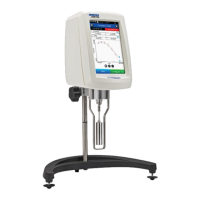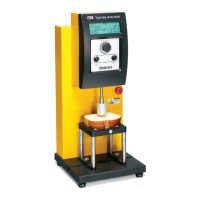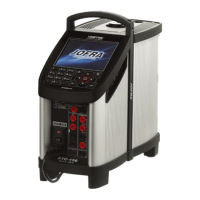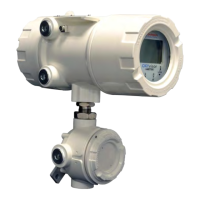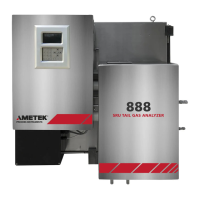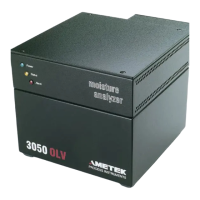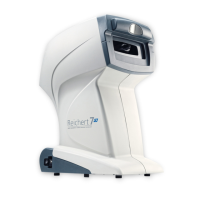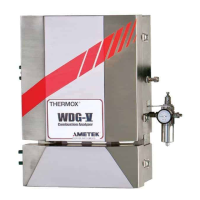M21-400 REV.1.1 DVPLUS DIGITAL VISCOMETER - OPERATIONAL MANUAL
APPENDIX K - FAULT DIAGNOSIS AND TROUBLESHOOTING
Listed are some of the more common problems that you may encounter while using your Viscometer.
SPINDLE DOES NOT ROTATE
• Make sure the Viscometer is plugged in.
• Check the voltage rating on your Viscometer (100-240 V); it must match the wall voltage.
• Make sure the motor is ON and the desired RPM is selected.
SPINDLE WOBBLES WHEN ROTATING OR LOOKS BENT
• Make sure the spindle is tightened securely to the Viscometer coupling.
• Check the straightness of all other spindles; replace if bent.
• Inspect Viscometer/spindle threaded coupling and mating areas for dirt; carefully clean threads in the
spindle coupling with 3/56-inch left hand tap.
• Inspect Viscometer/spindle magnetic couplings and mating areas for debris, e.g. metallic chips or shavings.
• Inspect threads for wear; if the threads are worn, the unit needs service (see Appendix M). Check to see if
spindles rotate eccentrically or wobble. There is an allowable run-out of 1/32-inch in each direction (1/16-
inch total) when measured from the bottom of the spindle rotating in air.
• Check to see if the Viscometer coupling appears bent; if so, the unit is in need of service (see Appendix
M: Warranty Repair and Service).
INACCURATE READINGS
• Verify spindle, speed, and model selection.
• Verify spindle selection is correct on DVPlus.
• If % readings are under-range (less than 10%), the edge of the Torque field will turn yellow, as will the
Torque Bar at the top of the display. Change spindle and/or speed.
• "OVERRANGE" on the digital display means the unit is over-range (greater than 100%); reduce speed and/
or change spindle.
• Verify test parameters: temperature, container, volume, method. Refer to: "More Solutions to Sticky
Problems", Section III "DVPlus Viscometer Operating Instructions", Appendix C: Variables in Viscosity
Measurements.
• Perform a calibration check; follow the instructions in Appendix E.
• Verify tolerances are calculated correctly.
• Verify the calibration check procedures were followed exactly.
• If the unit is found to be out of tolerance, the unit may be in need of service. See Appendix M for details on
Warranty Repair and Service.
VISCOMETER WILL NOT RETURN TO ZERO
• Viscometer is not level
• Check with spindle out of the sample.
• Adjust the laboratory stand.
• Pivot point or jewel bearing faulty
• Perform an Oscillation Check
• Refer to Appendix G for Automatic Oscillation Check.
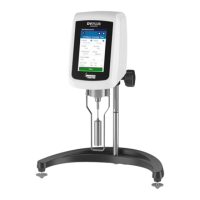
